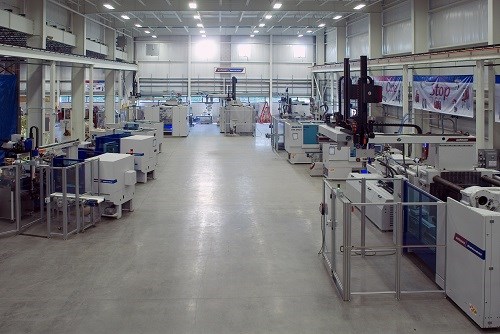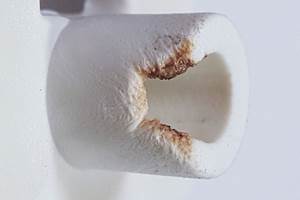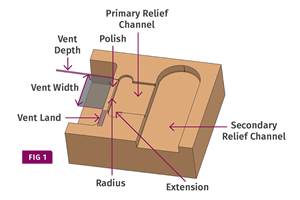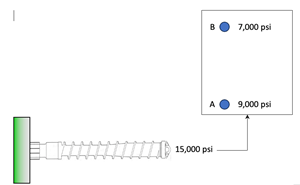Wittmann Battenfeld Hosts Live Show
Open house to celebrate the expanded U.S. headquarters showcases innovations.

Some 200 visitors attended the open house at the expanded U.S. headquarters of in Torrington, Conn., on June 5-6. The occasion was the official opening of a $3-million, 20,000-ft2 addition to the existing 70,000 ft2. The two-day event featured nine operating injection molding cells, plus additional exhibits of robotics and auxiliaries, and a full slate of technical workshops presented by Wittmann Battenfeld experts as well as speakers from , , , and Hosts of the meeting were Michael Wittmann, general manager of Wittmann Group; Georg Tinschert, managing director and CEO of Wittmann Battenfeld; David Preusse, president of Wittmann Battenfeld Inc. (North America); and Sonny Morneault, U.S. national sales manager. Among the highlights of the meeting:
• Michael Wittmann said the parent company was increasing capacity for building EcoPower all-electric presses and for in-house manufacturing of giant 30-metric-ton platens for the company’s largest, 1600-m.t., presses. The firm is also expanding its Mexican sales/service headquarters.
• Tinschert said the new MacroPower E hybrid two-platen line has been expanded since its introduction at last fall’s K 2013 show in Dusseldorf: From the original 450-m.t. model, the line has been expanded to include sizes of 400, 500, 550, 650, and 700 m.t.
• Tinschert revealed that Wittmann Battenfeld is exploring with customers the nascent field of structural thermoplastic composites. In particular, he said the firm is looking into overmolding “dry” reinforcing fabrics, skipping the intermediate steps of purchasing and reheating preimpregnated “organic sheets,” as they are often called.
• There was lots of news in robots at the open house. Wittmann showed off its newest robot line, the W8 pro series, which currently has just one model (W833 pro), which will be joined by three more at the Fakuma show in Friedrichshafen, Germany, in October. The line will eventually span the entire W8 series range from 6 to 275-lb payload capacity. The new series is more energy-efficient, more vibration-resistant, quieter, and has a neater design with fewer and shorter cables and more compact control cabinet, plus LED status lights like the the latest versions of other Wittmann auxiliaries.
• There are several new software features for W8 and W8 pro series robots, including a new Wizard to make setup easier and also more flexible than before; Quickload access to stored job recipes without requiring password access; new setup screen; One Touch Auto for one-button launching of a reference routine and sending the robot to its ready position; Dry Cycle Direct, another one-button command for a low-speed dry cycle; and a new Offline Editor to allow a PC to emulate the teach pendant for remote programming.
• The live exhibits demonstrated Wittmann’s first use of 3D printed robot EOAT, made of laser-sintered nylon powder for a four-cavity mold and utilizing a new integral “leaf-spring” design in place of metal springs to compensate for variation in part pickup position. What’s more, 3D printing allows integration into the EOAT of some formerly purchased pneumatic components.
• Also demonstrated was Wittmann’s fairly new RFID chip technology incorporated into robot EOAT and the robot arm, which ensures that the proper tooling is loaded for a particular job.
Look for more details on these and other innovations from the Wittmann Battenfeld open house in an article in the August issue of Plastics Technology.
Related Content
A Systematic Approach to Process Development
The path to a no-baby-sitting injection molding process is paved with data and can be found by following certain steps.
Read MoreBack to Basics on Mold Venting (Part 1)
Here’s what you need to know to improve the quality of your parts and to protect your molds.
Read MoreBack to Basics on Mold Venting (Part 2: Shape, Dimensions, Details)
Here’s how to get the most out of your stationary mold vents.
Read MoreUnderstanding the Effect of Pressure Losses on Injection Molded Parts
The compressibility of plastics as a class of materials means the pressure punched into the machine control and the pressure the melt experiences at the end of fill within the mold will be very different. What does this difference mean for process consistency and part quality?
Read MoreRead Next
People 4.0 – How to Get Buy-In from Your Staff for Industry 4.0 Systems
Implementing a production monitoring system as the foundation of a ‘smart factory’ is about integrating people with new technology as much as it is about integrating machines and computers. Here are tips from a company that has gone through the process.
Read MoreLead the Conversation, Change the Conversation
Coverage of single-use plastics can be both misleading and demoralizing. Here are 10 tips for changing the perception of the plastics industry at your company and in your community.
Read MoreBeyond Prototypes: 8 Ways the Plastics Industry Is Using 3D Printing
Plastics processors are finding applications for 3D printing around the plant and across the supply chain. Here are 8 examples to look for at NPE2024.
Read More















